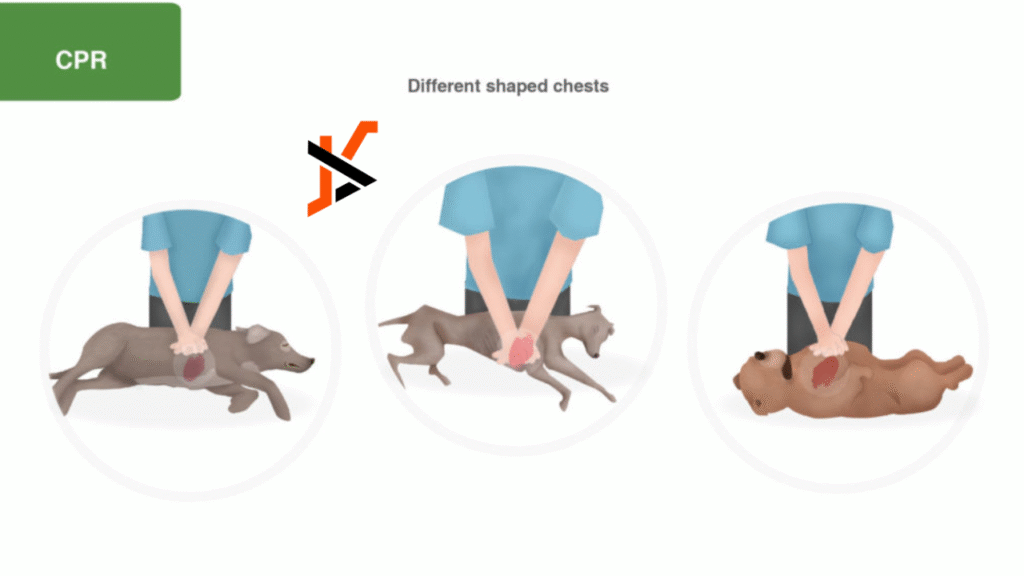Knowing how to do first aid and CPR for your pet can save their life. Just like people, pets can get into emergencies-like choking, heavy bleeding, or trouble breathing. If you’re a pet owner, learning these skills helps you act fast when it really matters.
It could be the difference between life and death for your furry friend. Let’s dive in!
Understanding Pet Emergencies
Pet emergencies can be anything from small accidents to serious, life-threatening problems. It’s important to know the signs that require quick action. Some of the most common emergencies are:
Choking
Choking happens when a pet swallows something that blocks their airway. This can be very dangerous and needs quick action. Knowing how to help your pet clear the blockage can save their life.
Bleeding
Losing a significant amount of blood can cause shock, which is life-threatening. It’s important to stop the bleeding as fast as possible. Applying pressure and getting veterinary help right away can make a big difference.
Heatstroke
Pets are more sensitive to heat than people and can overheat quickly. Heatstroke can cause serious damage to their organs if not treated quickly. Always keep your pet cool and watch for signs of overheating.
Seizures
Seizures can look scary, but knowing what to do helps keep your pet safe. During a seizure, try to keep your pet away from sharp objects and don’t put anything in their mouth. After the seizure ends, contact your vet immediately.
Essential First Aid Techniques
Being prepared means knowing how to administer first aid effectively. Here are some basic techniques every pet owner should be familiar with:
CPR for Pets
Cardiopulmonary resuscitation (CPR) isn’t just for humans. In a critical situation where your pet stops breathing or their heart stops beating, delivering CPR can be life-saving.
If you want to learn more, check out a detailed course. Follow these steps:
- Make sure area’s safe.
- Check breathing and pulse.
- No pulse? Start compressions (100-120 per minute).
- Give two breaths regularly.
Dealing with Choking
Choking can happen suddenly, and recognizing it is vital. Signs include pawing at the mouth, coughing, or a blue-tinged tongue.
If you see a small dog choking, hold it with its back against your chest and give a few thrusts to dislodge the object. For larger dogs, a Heimlich maneuver can be used by placing your hands just below the rib cage and thrusting inward and upward.
When to Seek Professional Help
Even if you manage to stabilize your pet, some situations necessitate veterinary intervention. Signs that necessitate immediate professional help include:
- Severe bleeding won’t stop.
- Unresponsive or unconscious pet.
- Breathing trouble after aid.
- Vomiting or diarrhea repeats.
Understanding when to seek help is as crucial as knowing how to help your pet on your own.
Be Prepared and Stay Informed
Pet first aid and CPR skills are invaluable for pet owners. By educating yourself, you can respond effectively to emergencies and keep your furry friends safe. Take the time to learn more about these life-saving techniques, and consider pursuing formal training through a certified course to enhance your skills. Remember, being prepared benefits not only your pet but also gives you peace of mind as a pet owner.
Is this article helpful? Keep reading our blog for more.

